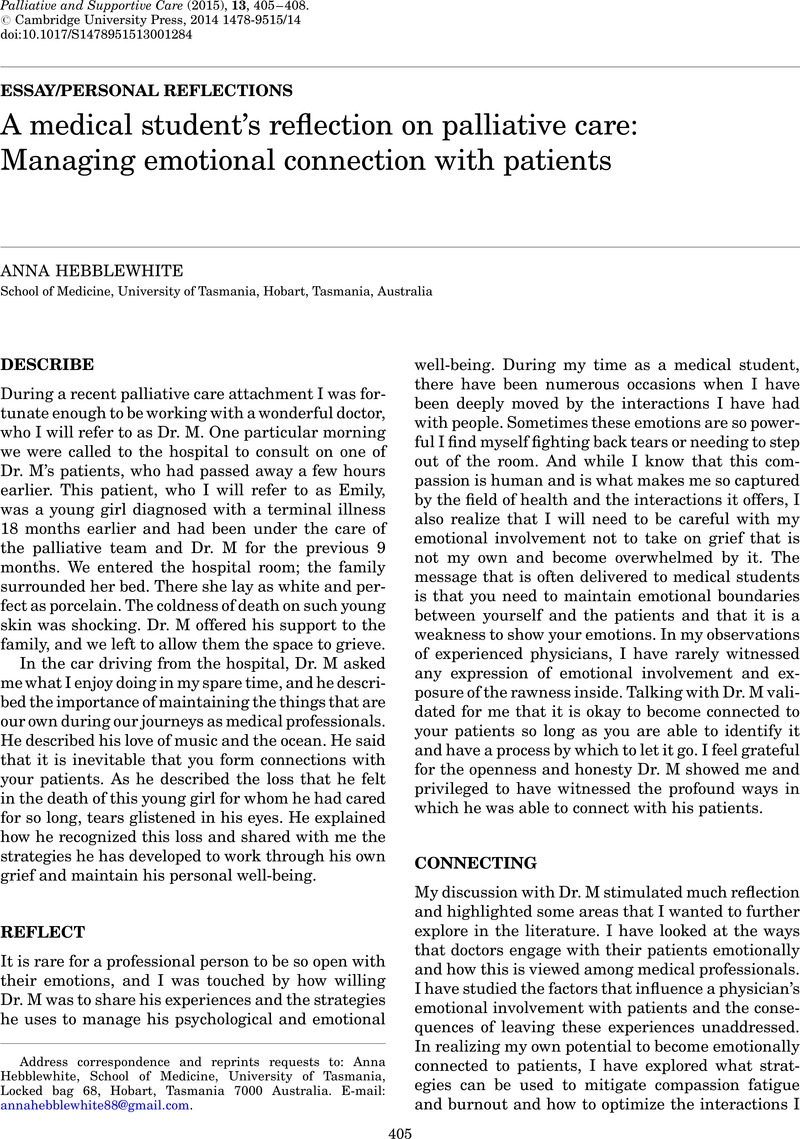Crossref Citations
This article has been cited by the following publications. This list is generated based on data provided by Crossref.
Ho, Chong Yao
Kow, Cheryl Shumin
Chia, Chin Howe Joshua
Low, Jia Ying
Lai, Yong Hao Melvin
Lauw, Sarah-Kei
How, Ashley Ern Hui
Tan, Lorraine Hui En
Ngiam, Xin Ling Lisa
Chan, Natalie Pei Xin
Kuek, Tze Yin Joshua
Kamal, Nur Haidah Ahmad
Chia, Jeng Long
Abdurrahman, Ahmad Bin Hanifah Marican
Chiam, Min
Ong, Yun Ting
Chin, Annelissa Mien Chew
Toh, Ying Pin
Mason, Stephen
and
Krishna, Lalit Kumar Radha
2020.
The impact of death and dying on the personhood of medical students: a systematic scoping review.
BMC Medical Education,
Vol. 20,
Issue. 1,



